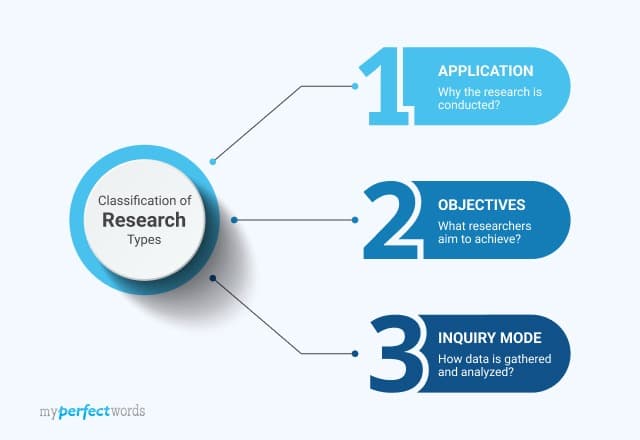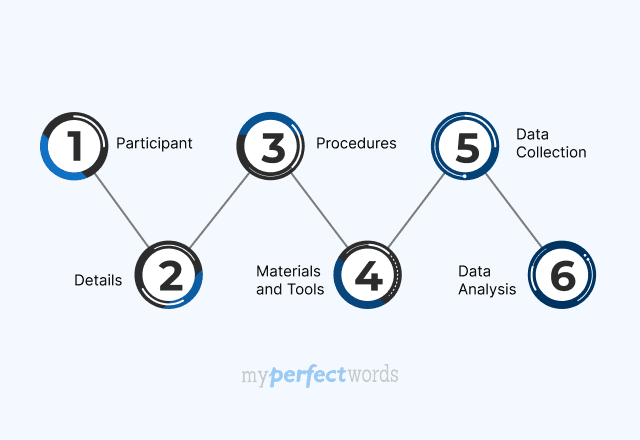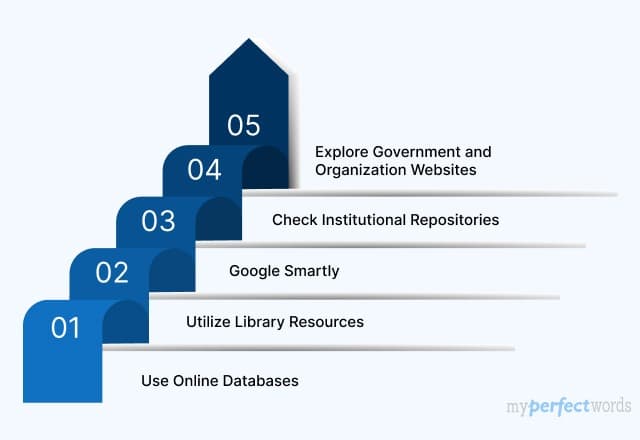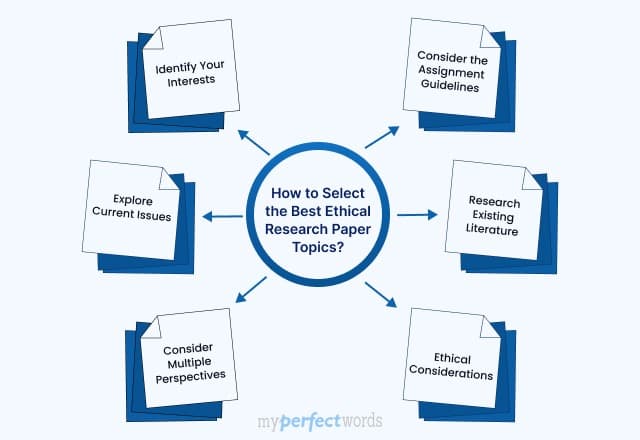

Have you ever felt stuck and confused when trying to share the results of your research in a paper? You're not alone!
Many students and researchers struggle with making their findings easy to understand while still sounding smart. It can get pretty frustrating when you're not sure how to talk about all the data and numbers in your research.
Without clear guidelines, it's easy to feel lost and unsure about how to make your results section both detailed and easy to read.
Don't worry! This guide is here to help you figure it all out.
We'll break down the process of writing a results section into simple steps. From explaining tricky stats to showing your data clearly, we've got your back.
Let's get started!
On This Page![]()
- 1. What Exactly is the Result Section of a Research Paper?
- 2. Importance of the Result Section of a Research Paper
- 3. How to Write the Results Section of a Research Paper?
- 4. Differences Between Qualitative and Quantitative Data
- 5. How To Write The Results Section of A Research Paper - Examples
- 6. Result vs Discussion Section vs Conclusion - What’s the Difference?
- 7. Mistakes to Avoid While Writing the Results Section
What Exactly is the Result Section of a Research Paper?
The results section of a research paper is where you get to showcase the findings of your study.
Think of it as the big reveal, where you share all the important information and data you've gathered. This section is crucial because it's where your reader learns about the outcomes of your research and whether your hypotheses were supported or not.
Importance of the Result Section of a Research Paper
The results section in a research paper is really important. It's like a hub where you put all the main findings and results from your study.
This part is crucial because it shows exactly what data you gathered and how you analyzed it.
In the academic world, the research results act as a kind of checkpoint. It lets other researchers and scholars review and confirm the reliability of your study methods. This helps ensure that your research is trustworthy and adds valuable information to the wider pool of knowledge in a specific field.
Also, the results section helps either prove or disprove the hypothesis you set up in your study. It's the part where the numbers and trends either support what you expected or reveal surprising insights.
What's Included in the Result Section of a Research Paper
When you're talking about the results of a research paper, it's important to know the key parts that make it clear and complete.
Let’s see what the results section of a research paper includes:
Component | Description |
Data Presentation | Clear display of collected data through tables and graphs. |
Statistical Analyses | Explanation of statistical methods used and their outcomes. |
Findings Narration | Interpretation of findings, connecting them to research questions or hypotheses. |
Comparison with Hypotheses | Explicitly comparing obtained results with initial hypotheses or expectations. |
Limitations and Constraints | Acknowledging study limitations, such as methodological constraints or sample size issues. |
Supplementary Materials | Including extra materials like appendices for a more in-depth understanding, as necessary. |
Key Points To Consider In The Result Section:
- Clarity: Present the results in a straightforward manner, making it easy for readers to comprehend.
- Objectivity: Avoid interpretation or discussion at this stage; stick to presenting the observed data.
- Consistency: Organize the results logically, following the same order as your research questions or hypotheses.
How to Write the Results Section of a Research Paper?
The results section of a research paper is crucial for conveying the outcomes of your study in a clear and organized manner.
Follow these steps to learn how to write the findings section of a research paper:
Step 1: Start With a Clear Organization
Begin the results section with a brief introductory paragraph that outlines the purpose of the results. Mention the research questions or hypotheses that the study aimed to address.
- Order of Presentation
Present your results in a systematic and coherent order. Make sure the logical sequence with the research questions or hypotheses established in the earlier sections of your paper.
This helps readers follow a logical flow and easily locate information related to specific aspects of your study.
- Use of Subheadings
Divide the Results section into meaningful subsections using clear and descriptive subheadings.
Subheadings provide a roadmap for readers, guiding them through different parts of your results.
For example, if your research involves multiple variables or distinct analyses, create subheadings for each, making it easy for readers to navigate.
Step 2: Use Concise Text and Visuals
When writing the result section, use clear and concise language to communicate your results.
Avoid unnecessary details and focus on conveying the key research findings succinctly. Present each piece of data or result once, eliminating redundancy for a streamlined presentation.
- Utilize Tables and Figures: Tables and figures should be self-explanatory, with titles and captions providing essential context.
- Choose Appropriate Detail: Strike a balance between providing essential information and avoiding information overload.
Step 3: Be Objective and Specific
Present your findings without adding personal interpretation or analysis. Focus on conveying the observed outcomes in a straightforward and unbiased manner.
- Stick to the Facts: State what was found during the study without speculating on the reasons or implications.
- Include Numerical Data: Include means, medians, standard deviations, percentages, or any other statistical measures that accurately represent your results.
- Quantify Results: Use precise numbers to quantify your findings wherever possible. This adds clarity and concreteness to your presentation.
Example: Objective Presentation: "The study aimed to investigate the impact of X on Y. The results indicate a statistically significant correlation between X and Y, with a p-value of 0.01." Specific Detail: "The average increase in performance for Group A was 15%, compared to a 5% increase in Group B. This difference was statistically significant with a p-value of 0.05." Quantification: "Out of the 200 participants surveyed, 80% reported an improvement in their satisfaction levels after the intervention." Statistical Significance: "The difference in the means of the control and experimental groups was found to be statistically significant at the 0.05 level, suggesting a notable impact of the treatment." |
Step 4: Refer to Appendices
Evaluate the volume and complexity of your data to determine if it warrants inclusion in appendices. If your dataset is extensive and might overwhelm the main text, consider creating appendices.
Transfer detailed data, additional analyses, or supplementary information to appendices. Use separate appendices for different types of information, maintaining clarity.
- Highlight Relevance: Explain how the appendices supplement and enrich the content presented in the main text.
- Use Clear Labeling: Number or letter of each appendix for easy reference in the main text.
Step 5: Use Subheadings for Different Analyses
Recognize the various analyses conducted in your study, each addressing specific research questions or hypotheses. Introduce subheadings to distinguish and separate different analyses in the Results section.
Each subheading should correspond to a unique analysis, providing clarity to readers.
- Clearly Label Subsections: The subheading should succinctly convey the focus of the analysis without ambiguity.
- Guide Readers Effectively: The use of subheadings allows readers to locate specific information related to each analysis with ease.
Step 6: Highlight Patterns and Trends
Thoroughly examine your results to identify any recurring patterns or trends. Look for consistencies or variations in data points that are noteworthy for your study.
- Consider Multiple Analyses: Explore patterns across different analyses if applicable, ensuring a comprehensive understanding of your findings.
- Use Emphatic Language: Clearly convey the significance of identified trends in the context of your research questions.
- Connect to Research Questions: Explain how the observed trends contribute to answering the main queries of your study.
Step 7: Address Negative or Unexpected Results
Approach unexpected or negative results with transparency and honesty. Clearly state that the outcomes were not as anticipated.
Make sure to resist the temptation to downplay unexpected or negative results and acknowledge them as integral parts of the scientific process.
For Example:
Negative Result Acknowledgment: "Contrary to our initial hypothesis, the results of the intervention did not yield a significant improvement in participant satisfaction levels." |
Discussion of Potential Reasons: "Several factors may have contributed to this unexpected outcome, including participant variability, environmental influences, and potential limitations in the intervention delivery." |
Implications and Adjustments: "While the immediate impact was not as anticipated, these findings open avenues for further research to refine intervention strategies and better understand the factors influencing participant satisfaction." |
Step 8: Relate to Research Questions/Hypotheses
At the last, revisit the research questions or hypothesis established at the beginning of your paper. This serves as a reminder of the primary objectives of your study.
Explicitly connect each set of findings to the corresponding research question or hypothesis. Make sure you clearly state how the results address the specific inquiries posed at the outset.
Differences Between Qualitative and Quantitative Data
Understanding the difference between qualitative and quantitative data is fundamental in research methodology.
These two distinct types of data collection offer unique insights, each contributing to a comprehensive understanding of phenomena.
In this section, we explore the key characteristics that set qualitative and quantitative data apart.
Aspect | Quantitative Data | Qualitative Data |
Nature of Data | Involves measurable, numerical values. It deals with quantities and is typically expressed in terms of numbers. | Involves non-numerical information. It describes qualities, characteristics, or attributes. |
Measurement | Involves precise measurements and quantification. | Involves subjective observations and descriptions. |
Tips for Presenting Quantitative Data in the Results Section
- Use clear and concise tables or graphs to present numerical results.
- Include descriptive statistics (mean, median, etc.) to summarize central tendencies.
Example: "Upon meticulous analysis, it was found that the experimental group achieved an impressive average response time of 15 seconds, showcasing the notable efficiency and promptness facilitated by the implemented strategy. This not only signifies a significant improvement but also highlights the effectiveness of the intervention in expediting user interactions." |
Tips for Presenting Qualitative Data in the Results Section
- Summarize key themes or patterns derived from qualitative analysis.
- Use quotes or excerpts to illustrate significant findings.
Example: "In the realm of qualitative insights, a detailed examination uncovered consistent and heartfelt expressions of user satisfaction. Participants, in their candid responses, not only praised but passionately conveyed their appreciation for the intuitiveness and ease offered by the platform's user-friendly interface. Their remarks painted a vivid picture of a highly positive and enjoyable user experience, emphasizing the human-centric success of the design." |
How To Write The Results Section of A Research Paper - Examples
Here are a few examples that show how to write the results part of a research paper.
Check out our in-depth guide on research paper examples for hands-on samples and writing tips.
Result vs Discussion Section vs Conclusion - What’s the Difference?
The Results section presents a factual showcase of observed or measured outcomes.
In contrast, the discussion section goes beyond the facts, interpreting results, providing context to findings, and exploring their broader implications.
Finally, the research paper conclusion summarizes key points, discusses implications, and often suggests avenues for future research.
Mistakes to Avoid While Writing the Results Section
The results section of a research paper demands precision and clarity to communicate the study's outcomes effectively. However, several common mistakes can compromise the quality of this section.
To ensure an insightful results section, be mindful of the following pitfalls:
Common Pitfall | Guidance |
Data Overload | Focus on essential findings to prevent overwhelming details. |
Lack of Structure | Arrange results logically using subsections for clarity. |
Misinterpretation | Exercise caution; state only what data genuinely reveals. |
Inadequate Context | Provide sufficient background and methodology sections. |
Ignoring Negative Results | Acknowledge and discuss contradictions transparently. |
Statistical Details | Clearly explain methods, supporting reproducibility. |
Repetition | Summarize data concisely to avoid unnecessary redundancy. |
Graphical Representation | Use clear, labeled visuals contributing to understanding. |
Outliers Explanation | Clarify unexpected data points for enhanced credibility. |
Discussion Link | Establish a smooth connection between results and the broader research question. |
In summary, by following these tips and avoiding common mistakes, you can create a results section that meets academic standards and clearly shows why your research is important.
Remember, the results section sets the stage for the subsequent discussion. If you present your findings well, it makes your whole research paper better and easier to understand.
If you ever feel stuck while writing a research paper, especially in the results section, consider reaching out to MyPerfectWords.com!
When you buy research paper with us, our experts craft an outstanding result section that resonates with your whole research paper. We can also craft different parts of a research paper upon customized requests!
So, do not delay any further! Tell us to 'do my paper' now and get your custom paper from us today.
Frequently Asked Questions
How Long Should The Results Section Of A Research Paper Be?
The length varies, but keep it concise. Include enough information to support your discussion and conclusion without unnecessary details. A balanced Results section enhances the overall flow of your research paper.
What is the Difference between Results And Discussion Sections?
The results section presents the raw findings of a study, focusing on data and observations.
In contrast, the Discussion section interprets and analyzes these results, offering insights, context, and help readers understand the significance of the findings.

Write Essay Within 60 Seconds!
Use our AI tool to generate high quality essay
WRITTEN BY
Alexander P.
Harvard Law graduate. I build arguments anticipating every objection and dismantling it before it's raised. Airtight logic is non-negotiable.
Keep reading
Research Paper Writing - A Step by Step Guide

Research Paper Examples: Free Samples & Templates for Students

Guide to Creating Effective Research Paper Outline

A Catalog of 300+ Research Paper Topics
-9352.jpg&w=828&q=75&dpl=dpl_Gdsvp7W41w43ZdA5Qu4MrGDa9Trz)
Research Proposal Writing - A Step-by-Step Guide

How to Start a Research Paper - 7 Easy Steps
-9374.jpg&w=828&q=75&dpl=dpl_Gdsvp7W41w43ZdA5Qu4MrGDa9Trz)
How to Write an Abstract for a Research Paper - A Step by Step Guide

Writing a Literature Review For a Research Paper - A Comprehensive Guide

Qualitative Research - Methods, Types, and Examples

8 Types of Qualitative Research - Overview & Examples

Qualitative vs Quantitative Research - Learning the Basics

200+ Engaging Psychology Research Paper Topics for Students in 2025

Learn How to Write a Hypothesis in a Research Paper: Examples and Tips!

20+ Types of Research With Examples - A Detailed Guide

Understanding Quantitative Research - Types & Data Collection Techniques

230+ Sociology Research Topics & Ideas for Students

How to Cite a Research Paper - A Complete Guide

Excellent History Research Paper Topics- 300+ Ideas

A Guide on Writing the Method Section of a Research Paper - Examples & Tips

How To Write an Introduction Paragraph For a Research Paper: Learn with Examples

Crafting a Winning Research Paper Title: A Complete Guide

Writing a Research Paper Conclusion - Step-by-Step Guide

Writing a Thesis For a Research Paper - A Comprehensive Guide

How To Write A Discussion For A Research Paper | Examples & Tips

Writing a Problem Statement for a Research Paper - A Comprehensive Guide

Finding Sources For a Research Paper: A Complete Guide

A Guide on How to Edit a Research Paper

200+ Ethical Research Paper Topics to Begin With (2025)

300+ Controversial Research Paper Topics & Ideas - 2025 Edition

150+ Argumentative Research Paper Topics For You - 2025

How to Write a Research Methodology for a Research Paper

